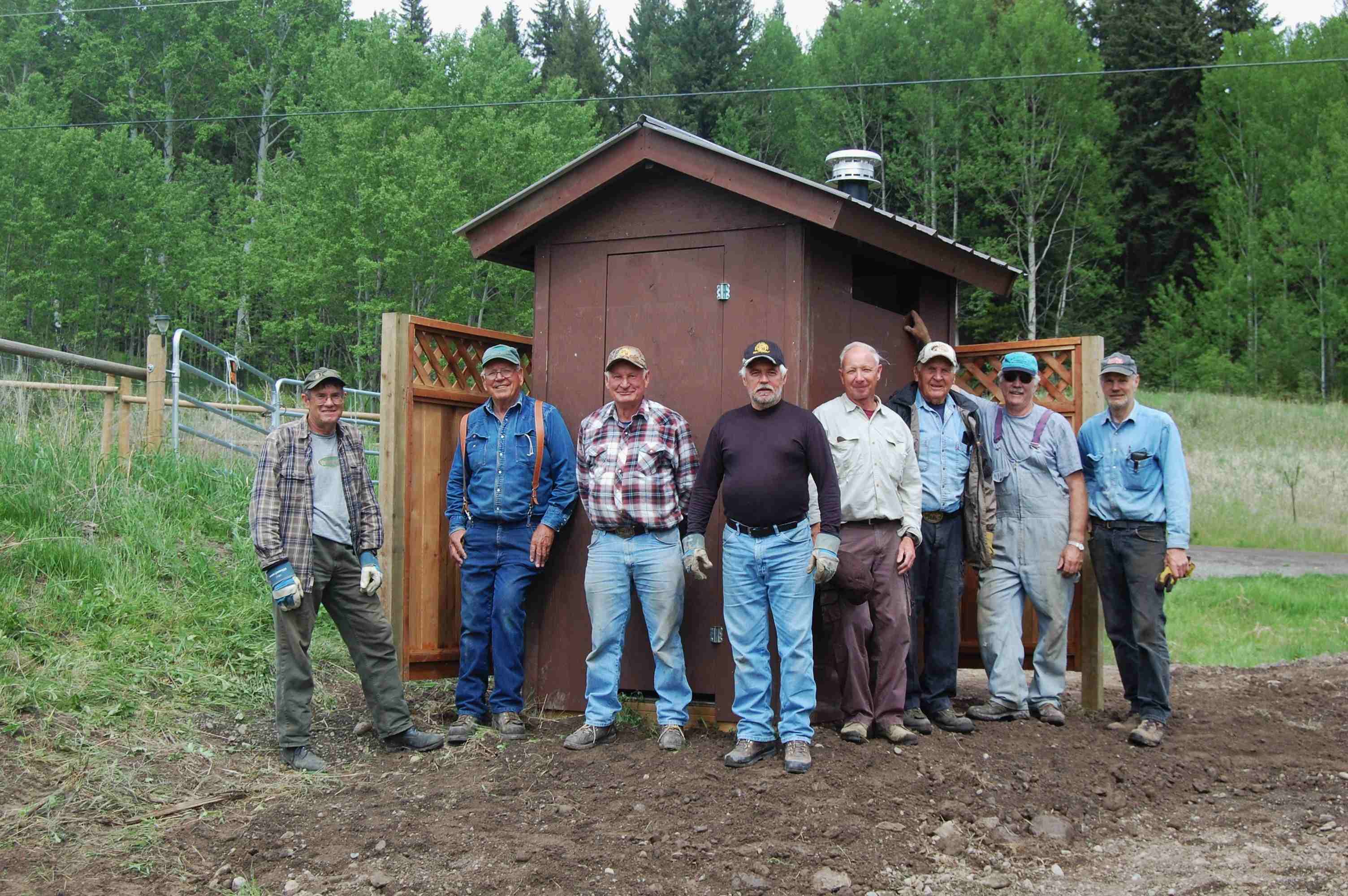 North
of Savona above Kamloops Lake, Red Lake is long, about 270 acres in size and
orientated roughly north west. It has a few islands and a narrows in the center.
There are three public access points located on the southern portion of the
lake.
North
of Savona above Kamloops Lake, Red Lake is long, about 270 acres in size and
orientated roughly north west. It has a few islands and a narrows in the center.
There are three public access points located on the southern portion of the
lake. Red Lake Improvement Projects
Red Lake is one of those lakes that has made the Kamloops region world famous for small lakes fishing. It is stocked with rainbow and eastern brook trout which are genetically triploid. That genetic alteration results in fish never going through a spawning cycle allowing them to grow to an exceptional size.
Unfortunately Red Lake suffers from winter oxygen depletion which kills many fish. Another problem was the difficulty anglers had in accessing the lake due to the steepness of the shoreline or exclusion through private property. In spite of this Red Lake supported about 3,000 angler days annually.
 North
of Savona above Kamloops Lake, Red Lake is long, about 270 acres in size and
orientated roughly north west. It has a few islands and a narrows in the center.
There are three public access points located on the southern portion of the
lake.
North
of Savona above Kamloops Lake, Red Lake is long, about 270 acres in size and
orientated roughly north west. It has a few islands and a narrows in the center.
There are three public access points located on the southern portion of the
lake.
Works undertaken through the cooperation and support of a number of agencies has helped with those problems and combined with an oxygen injection project may just transform the lake into a very productive one.
The Habitat Conservation Trust Foundation, created with surcharges on hunting, fishing and trapping licences was a major funder of the oxygen injection project. Other significant contributors to works at Red Lake were; the Highland Valley Enhancement Fund, Teresen Gas (Fortis BC), the Ministry of Forests, Lands and Natural Resource Operations and the BC Wildlife Federation. The Kamloops and District Fish and Game Association provided coordination, funding and considerable ground work.
In addition to funding efforts, a large amount of time was used in obtaining permits and in creating cooperative efforts with a multitude of agencies. Those included; several ministry branches of Forests, Lands and Natural Resource Operations, BC Hydro, land owners, a surveyor, a faller, a heavy equipment operator and an archaeologist. As work was to begin one of the access areas became a designated archaeological site. More permitting with attached work conditions was required and was obtained with the assistance and support of the Skeetchestn Band.
Access improvements are the work of Bob Goldie and his crew of Kamloops and District Fish and Game Association members. The project was expected to be complete in a year, but turned out to be much more complicated and took three.
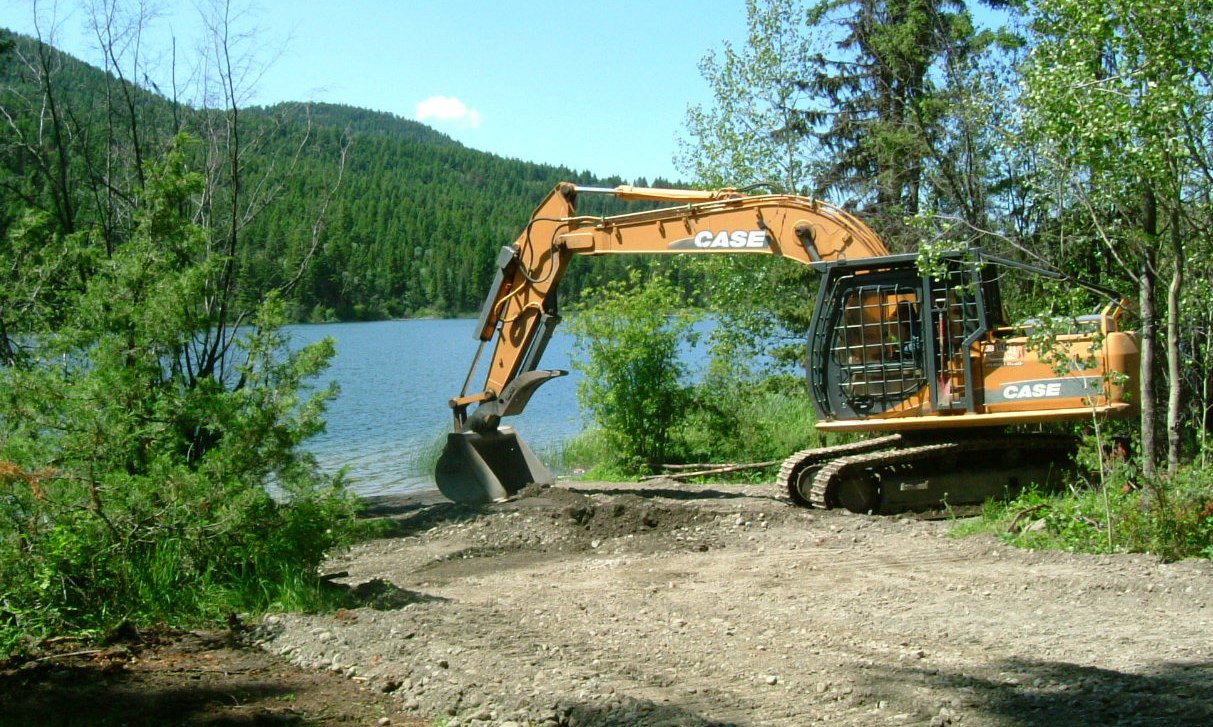
The northern most access is a winter site used to reach the lake only when shore mud and vegetation are frozen. It is found at kilometer 39 on the Tranquille-Criss Creek (Red lake) road as measured from its start at Tranquille Farms in Kamloops. That site has had the parking area increased, leveled and graveled with a pit toilet installed.
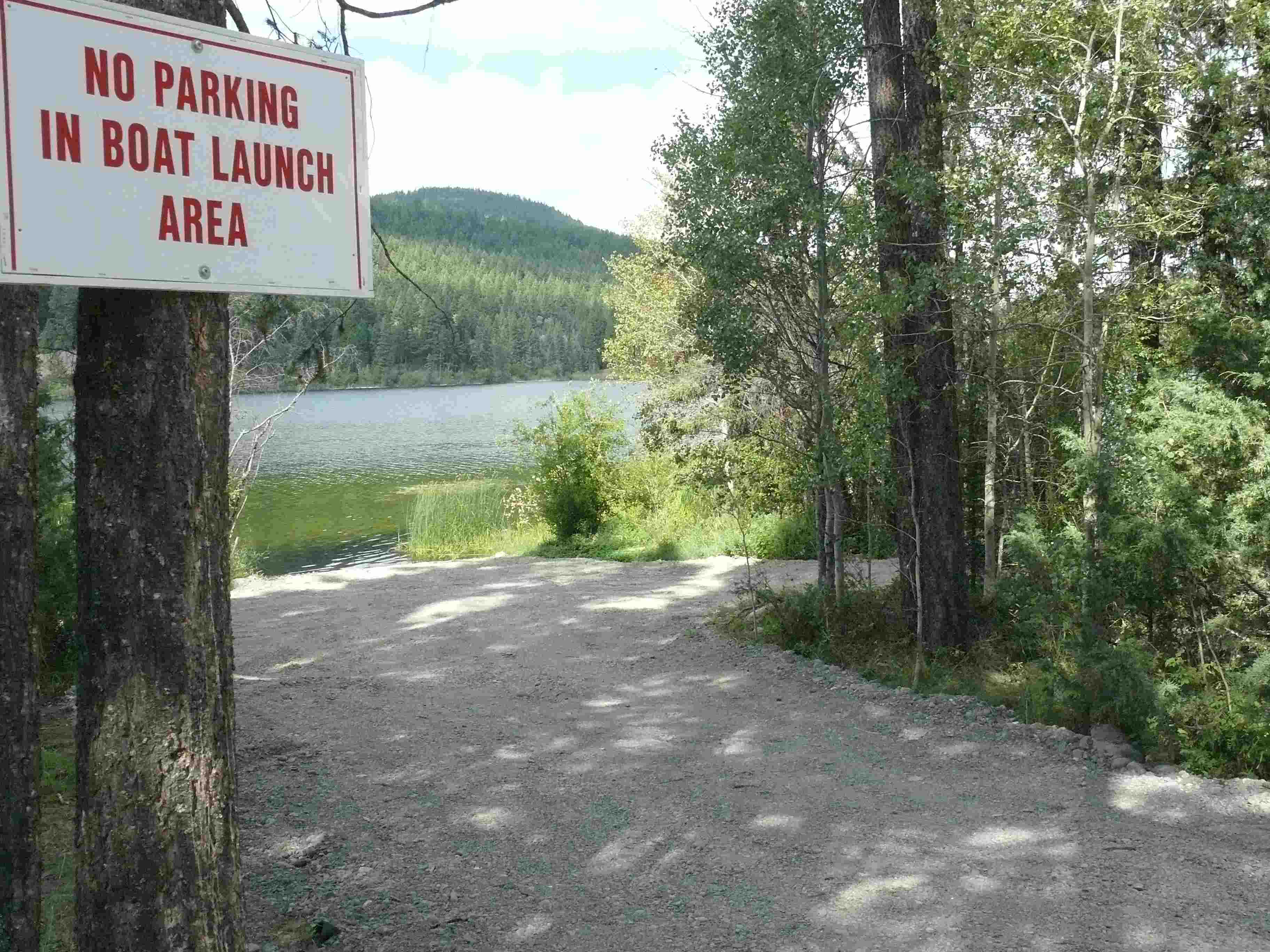
The middle site has had the slope reduced, the road realigned, widened, graveled and a toilet installed. To find this boat launch location continue southwest of the first site about a kilometer onto Red Lake Drive and then to Strom Place Road. The southern most launch site was not improved as it is too cramped between the lake, the road and rock cliffs.
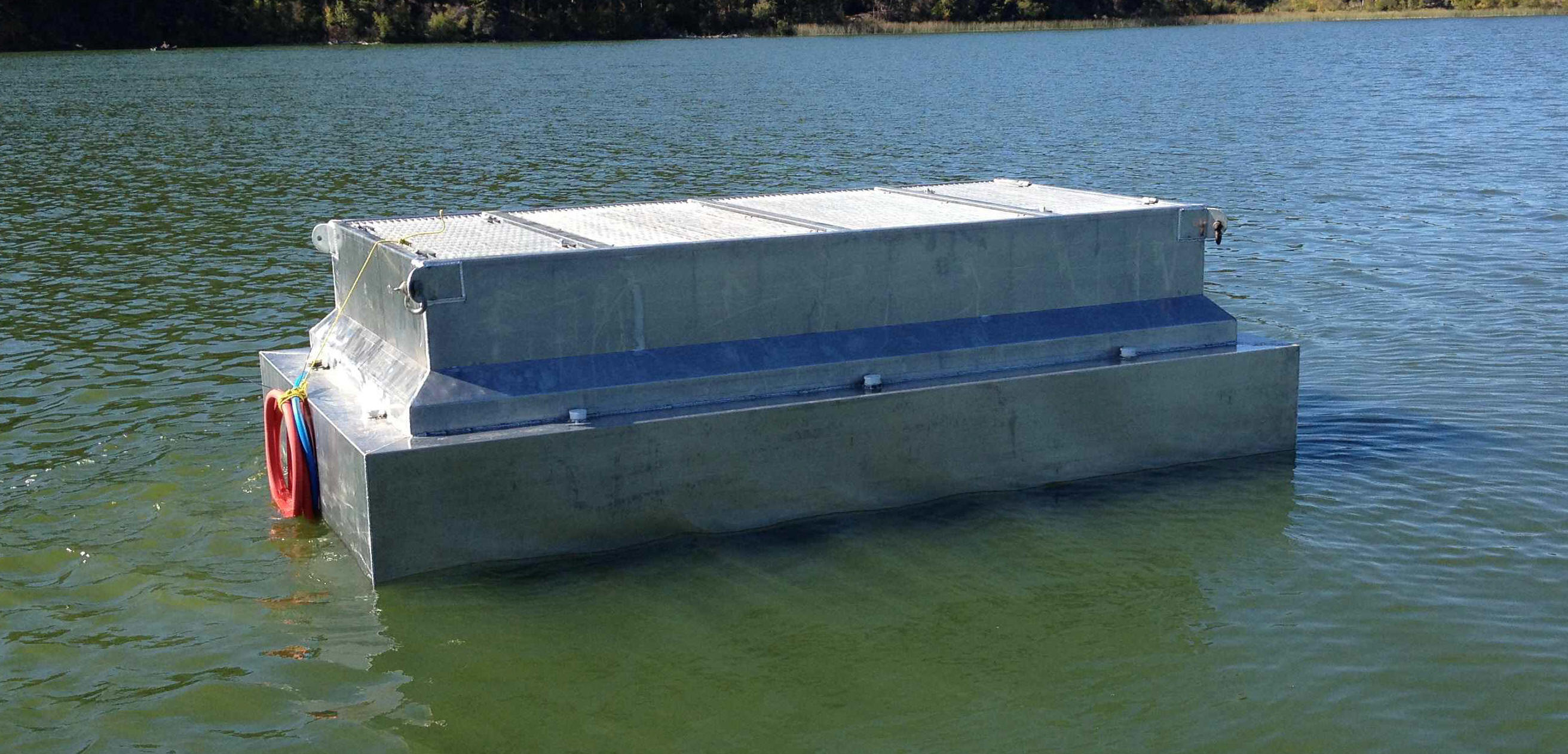
Complimenting access improvements, is a hypolimnetic oxygen injection system installed in Red Lake by the Kamloops region's Ministry of Forests, Lands and Natural Resource Operations fisheries biologists, Steve Maricle and Andrew Klassen.
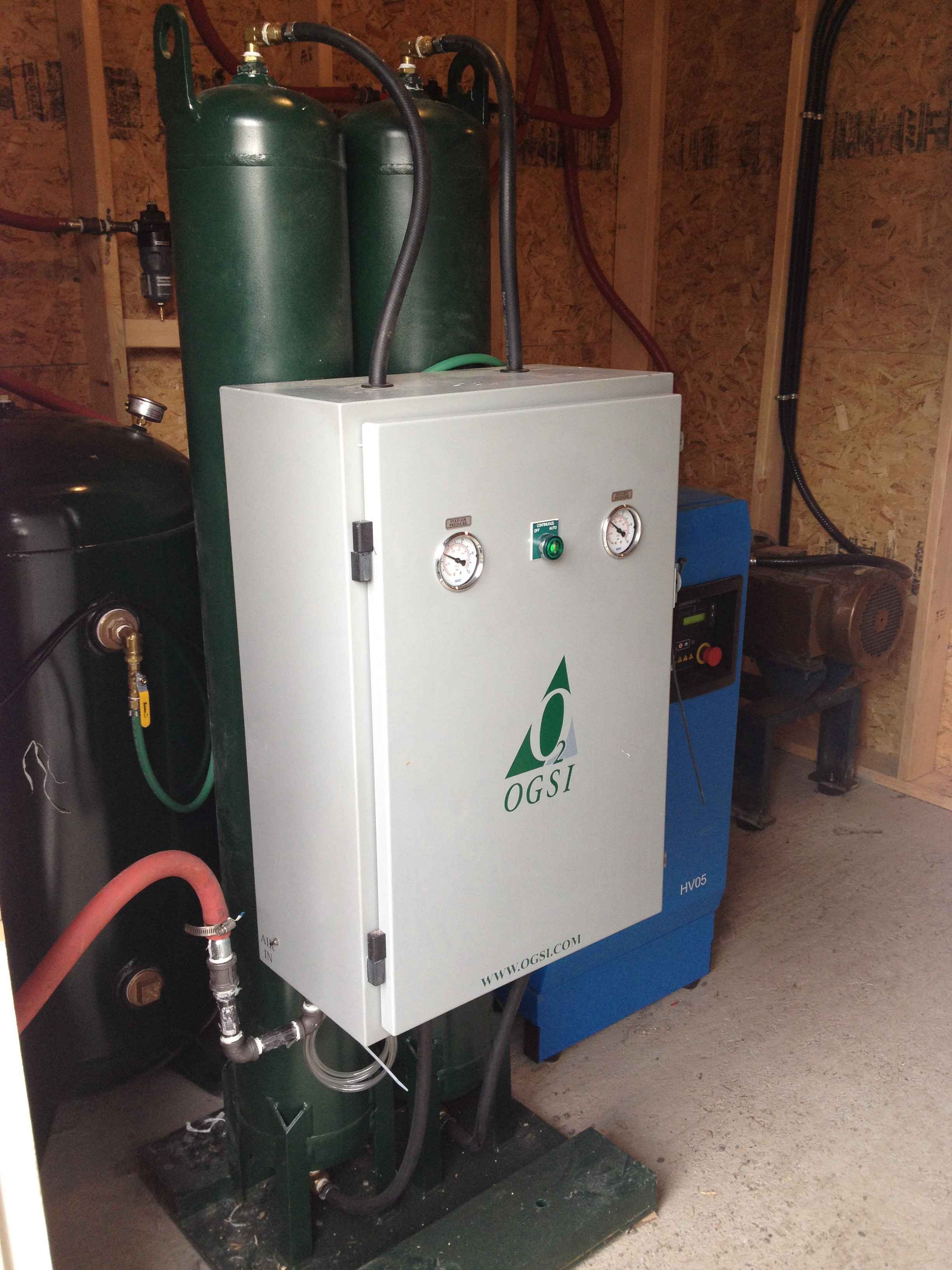
Hypolimnetic injection is a new procedure using pure oxygen extracted from air and piped directly into the lake. A previous solution to low oxygen levels were aerolater systems, which sprayed water above the lake surface to mix with the air. However this method, used on seven other lakes in the region, creates large openings in the ice requiring temporary signage and fencing each winter. The oxygen injection method is designed to eliminate the danger of thin ice or open water and the need for many hours of fencing work.
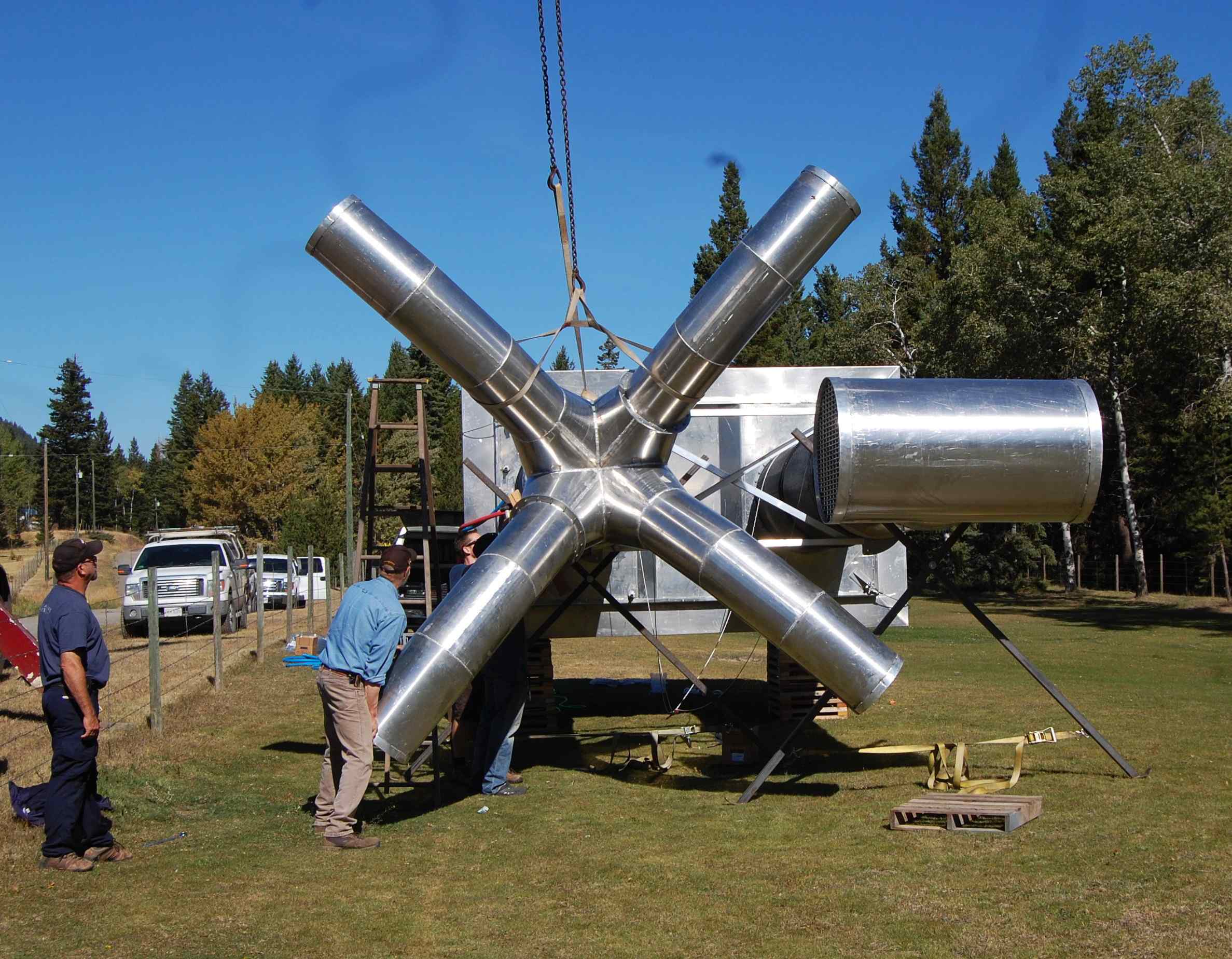
At the heart of the lakeside oxygen generation process is zeolite, a microporous aluminosilicate mineral. It is a naturally occurring substance with wide and fascinating uses in industry. The system uses compressed air forced through a filter of zeolite which separates oxygen from nitrogen due to the molecule size difference.
Filtered oxygen is stored then pumped as very fine bubbles into the lake below the surface. The oxygen diffuser was installed with the use of a helicopter carrying the huge device out to where divers anchored it to the bottom with large weights and cables. Just the top portion of the diffuser shows at the lake surface while the four chambered outlet pipes below ensure a wide distribution of oxygenated water when needed.
With oxygen injection, regular winter survival of Red Lake fish is expected to increase fishing activity to 10,000 angler days, generating about a million dollars worth of revenue for the local economy.
The system has been tested and is ready to work this winter. All parties can take pride in their roles from improving facilities and lake access to oxygenation project completion. It is likely that Red Lake will now be mentioned often in angling circles and should create some pleasant memories from around the family dining table.
Picture Information
1. Bob Goldie's Kamloops and District Fish and Game club's work crew at newly installed access facility: left; Mike Hanry, Doug Fielding, Ed Stratichuk, Elmer Fast, Don Whyte, Pat Wilmot, Bill Strom and Norm Atkins.
2. Excavator at boat launch, archaeological site, placing last of gravel on geotech material separating it from existing ground.
3. Completed boat launch at the central access site.
4. Only the top box portion of the anchored oxygen diffuser is seen at the lake surface. In winter any bubbles that reach the surface are captured within the box and no dangerous open water is created.
5. Lakeside oxygen generator and pump. Zeolite filter material is contained in the twin cylinders. Oxygen is temporarily stored in the tank on the left.
6. The bottom of the oxygen diffuser on its side prior to installation in Red Lake. The system is now connected to a shore air pumping and oxygen generation station. One pipe delivers air through the water intake tube on the right creating a flow up to the box on top. From there it flows down the four chambered tubes where tiny bubbles of pure oxygen are diffused into the water stream to the lake.